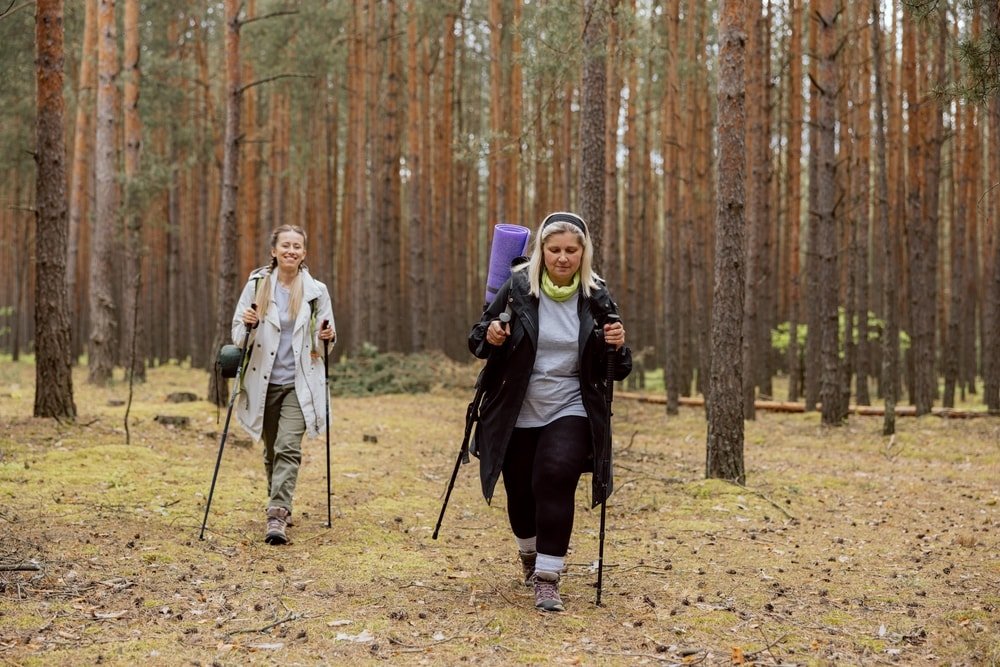Travel Trends
Beyond Borders Tourism Coalition urges action as new tariffs and political instability stall recovery for tourism industry

The Beyond Borders Tourism Coalition, a unified alliance of US and Canadian tourism, trade, and association stakeholders, calls for urgent policy clarity and coordinated action in the face of escalating tariffs and the recent funding cuts of critical NGOs and infrastructure support, while historic uncertainty grips cross-border travel.
The combined effects of tariffs, funding cuts, new fees to enter the United States, and uncertainty at border crossings are undermining recovery, deterring new investment, and reducing opportunities for cultural and economic exchange.
“Rising tariffs and economic headwinds are cutting into consumer purchasing power, reducing demand for U.S. vacations, and forcing our members to reconsider future investment and hiring. The economic impact has been immediate and measurable – USTOA members are already reporting millions of dollars in lost bookings and revenue, with some projecting a decline of up to 11% in international visitor spending for 2025 alone,” says Terry Dale, President, US Tour Operators Association. “These losses translate to cutbacks in operations, workforce reductions, and missed opportunities for communities nationwide. The ripple effects across our sector are deeply concerning, underscoring the urgent need for clear, stable policies that support a thriving U.S. travel economy.”
The Beyond Borders Tourism Coalition identified earlier this year that proactive, collaborative approaches are needed to reverse these trends and restore confidence in an industry that in the past contributed approximately $2.5 trillion USD to North America’s GDP, making up nine percent of total economic output. In the US, tourism supports close to 20 million jobs while in Canada 1.9 million jobs are attributed to the visitor economy.
“Thousands of jobs are on the line as these damaging tariffs disrupt the flow of tourists, drive up costs, and threaten our members’ livelihoods. The economic toll is immediate: Canadian tour operators are facing millions of dollars in lost bookings and mounting operational costs, with some businesses reporting declines of over 70% in cross-border travel activity for 2025. If decisive action isn’t taken, our communities will feel an economic impact that could take years to reverse as tourism-dependent businesses struggle to survive and local economies miss out on vital revenue,” says Jean Hébert, Executive Director, Canadian Association of Tour Operators (CATO).
The negative impacts on the visitor economy on both sides of the border continue through what is traditionally tourism’s busiest season across North America.
- Plummeting Travel Bookings: Foreign tourist spending in the U.S. is forecasted to drop by 11% in 2025, an $18 billion loss. Advanced air bookings between Canada and the U.S. have fallen by over 70% year-over-year.
- Hospitality Warning Signs: Major hotel chains and urban tourism boards are bracing for sharp declines (as much as 6-7% in some cities) in international visitation owing to economic and policy headwinds, with companies adjusting revenue forecasts downward. (Source: Bloomberg, Hospitality Insights)
- Consumer Impacts: Tariffs are driving the cost of goods higher on both sides of the border, eroding discretionary travel budgets and undermining consumer and business confidence in travel planning. (Source: TravelWeek)
- Regional & Indigenous Impact: Community initiatives and Indigenous-led tourism are being threatened by reduced travel, job cuts, and cultural setbacks.
“The ATTA’s recent global survey makes it clear: political instability and uncertain government policies are being sharply felt across the adventure travel sector. Our research shows that 93% of U.S. operators and 89% of their international counterparts anticipate negative impacts for at least the next year,” says the Adventure Travel Trade Association’s CEO Shannon Stowell. “While our industry is holding steady for now, the greatest challenge is uncertainty – especially around finances, safety, and the potential for sudden policy changes that disrupt travel plans and business confidence. As an industry, we must continue to adapt, but lasting resilience will require stronger support, greater policy clarity, and a renewed commitment to cross-border collaboration.”
All members of the Beyond Borders Tourism Coalition urge policymakers in the U.S. and Canada to prioritize negotiation, transparency, and cross-border cooperation over protectionist measures. Divisive trade and fiscal policies need to be reassessed in favor of approaches that restore confidence and support the livelihoods of millions:
“Both the U.S. and Canadian tourism economies have lost millions in revenue due to drastically reduced cross-border travel. The economic impact ripples across communities – from tour companies of all sizes to main street hotels and restaurants, iconic attractions, big cities, and rural destinations – many of which depend heavily on cross-border tourism to stay afloat,” says Catherine Prather, President of the National Tour Association. “Beyond advocating for stability, proper funding, and common-sense policy, we urgently need to restore global confidence that the U.S. remains a safe, welcoming, and inclusive destination. Without that commitment, the long-term viability of our industry and the communities we support is at serious risk.”
“Motorcoach tourism is the backbone of North American travel, generating $90 billion annually in group travel and connecting millions to vibrant cities, historic towns, and natural wonders,” says Fred Ferguson, President and CEO of the American Bus Association. “Our industry supports 500,000 jobs and countless small businesses, providing accessible and sustainable travel options for all. As a vital economic driver, motorcoach tourism fuels local economies and enriches communities. It’s essential that policies continue to promote both vibrant international and domestic travel – ensuring long-term growth and opportunity for our industry and the travelers we serve.”
“Student and youth travel is a cornerstone of North America’s visitor economy, generating billions in economic activity, supporting thousands of jobs, and providing life-changing educational and cultural experiences for young people each year. These journeys foster global understanding and inspire future leaders. Sadly, new tariffs and ongoing economic instability are making travel unaffordable for many schools and families. Rising costs, canceled programs, and greater uncertainty are cutting off opportunities just when our youth need them most,” says Carylann Assante, CAE, CEO of the Student and Youth Travel Association (SYTA). “Protecting student and youth travel isn’t just about economics – it’s about safeguarding access to learning, exchange, and hope for the next generation.”
“Indigenous tourism is a vital bridge connecting communities, cultures, and economies across Canada and the United States. This sector creates opportunities for Indigenous entrepreneurs, fosters cultural revitalization, and delivers unique experiences that attract millions of travelers every year,” says Keith Henry, President and CEO of the Indigenous Tourism Association (ITAC). “But the recent wave of tariffs and mounting political instability threatens all we have built. Rising costs and uncertainty hurt Indigenous-owned businesses disproportionately, putting jobs, livelihoods, and intergenerational knowledge at risk. To protect the promise of Indigenous tourism – for our communities and for future generations – our leaders must restore stable, open, and collaborative cross-border policies that allow Indigenous tourism to thrive.”
“International inbound travel is one of America’s strongest economic exports and a powerful tool for global connection – yet it’s being undermined by shortsighted policies, increased entry costs, and damaging rhetoric,” says Lisa Simon, CEO of the International Inbound Travel Association (IITA). “Our members are seeing lower bookings for the fall and into 2026 due to avoidable barriers like visa delays, excessive fees, and policy unpredictability. This is not just bad for business – it’s bad for America’s global image. We call on U.S. leaders to treat inbound travel as the essential economic and diplomatic asset it is and to act urgently to restore competitiveness, clarity, and confidence in traveling to the United States.”
“For Destination Original Indigenous Tourism, we’ve seen firsthand how recent regulations are jeopardizing opportunities on the world stage – including Indigenous inclusion in major cultural showcases. With global eyes turning to North America for events like the upcoming FIFA World Cup, this is our chance to welcome guests to our lands and lift up Indigenous musicians, artists, and creators from Canada, the U.S., and Mexico. Now, those voices risk being silenced,” says Sebastien Desnoyers-Picard, President and CEO of Destination Original Indigenous Tourism (DO-IT). “This is more than a cultural loss – it’s a missed economic opportunity in marketing, sales, and global reach for communities already facing barriers.The impact could be profound and far-reaching.”
The article Beyond Borders Tourism Coalition urges action as new tariffs and political instability stall recovery for tourism industry first appeared in TravelDailyNews International.
Travel Trends
Why Disposable Cameras Are Making a Comeback in Travel: A Nostalgic Trend Among Modern Tourists Seeking Authentic Memories in 2025

Sunday, August 3, 2025
In a world where smartphone cameras and digital technology have revolutionized photography, it may seem strange to choose a disposable camera over a device that fits in the palm of your hand and delivers perfect photos in an instant. Yet, in 2025, disposable cameras are experiencing a nostalgic resurgence among travelers. Despite the advancements in mobile photography, many tourists are reaching for these simple, no-fuss gadgets when they set out on their journeys.
This unexpected trend speaks to a growing desire for authenticity in the travel experience, away from the constant need to capture everything with a high-tech lens. For some travelers, disposable cameras offer a refreshing break from the overstimulating, digital-heavy way we document our lives. They offer a slower, more intentional approach to photography, allowing travelers to immerse themselves fully in the present moment rather than being distracted by screens.
The Charm of Disposable Cameras
At first glance, it might appear that disposable cameras are simply outdated relics of a bygone era. After all, smartphones have long replaced the need for a separate camera. However, disposable cameras offer something that smartphones cannot: simplicity and nostalgia. They are inexpensive, don’t require any setup, and most importantly, they encourage users to slow down and enjoy the moment without the pressure to get the perfect shot.
For travelers, especially those on road trips or international adventures, the appeal of a disposable camera is clear. With no charging cables or memory cards to worry about, these cameras can easily fit in a bag or even a back pocket, ready to capture spontaneous moments without the distractions of constant notifications or post-editing. The fact that there’s only a limited number of shots on a roll of film further encourages travelers to be selective with their photos, making each shot feel more deliberate and meaningful.
Travel Memories Through a Different Lens
When it comes to preserving memories, disposable cameras offer an entirely different experience than digital photography. While smartphones provide instant gratification with photos uploaded directly to social media or cloud storage, there’s something uniquely tangible about holding printed photographs. Many travelers who choose to use disposable cameras on their trips embrace the imperfections that come with film photography.
Using a disposable camera means embracing the unknown. You can’t immediately review your photos to adjust for mistakes or take multiple shots until you get the perfect angle. The images you capture are raw, unpolished, and often filled with imperfections like blurry shots, poor lighting, or unexpected angles. But that’s exactly what makes them special. These small flaws in the photos can evoke a sense of authenticity, offering a more organic representation of a moment that digital images often lack.
For those who grew up with film photography, the act of dropping off film at a local store to be developed is a cherished memory in itself. The excitement of waiting for the envelope of photos to be ready, knowing that a mix of successful shots and happy accidents would await inside, is a part of the experience that digital photography can’t replicate. Today, even though fewer shops offer film development, the nostalgia of holding physical photos is a feeling that’s hard to replace with an online album.
A Nostalgic Revival: Why Disposable Cameras Are Making a Comeback
Despite the popularity of digital photography, disposable cameras are making a notable comeback, especially among younger generations and nostalgic travelers. The shift can be attributed to several factors, including the growing interest in retro and vintage trends. While some might consider the images taken with disposable cameras to be a bit dated or imperfect, it’s precisely these qualities that have made them appealing again.
In fact, disposable cameras are now being stocked at stores like Urban Outfitters, signaling their growing popularity. They’ve even found a niche market among young travelers who want to add an analog touch to their digital-heavy lives. With the resurgence of film photography in popular culture, many travelers are embracing disposable cameras as a fun, easy way to capture memories during their travels while maintaining a sense of nostalgia. It’s not just about the pictures themselves, but the act of using something old-fashioned and unplugged.
The Disposable Camera Experience in Travel
When traveling, whether for a road trip or an international vacation, the disposable camera offers a unique opportunity to disconnect from the world of instant sharing and digital notifications. With only a limited number of shots available, travelers are more mindful about what they capture. This mindfulness can lead to a more immersive travel experience, where the focus is less on achieving the perfect shot and more on enjoying the moments that matter most.
For tourists, the idea of snapping a photo with a disposable camera is not just about the outcome but also about the process. It’s about slowing down, savoring the sights, sounds, and feelings of the moment. Whether it’s a stunning landscape, a cultural festival, or a candid moment with friends, disposable cameras remind travelers to be present and focus on what’s right in front of them, rather than obsessing over filters, angles, or likes.
Additionally, disposable cameras are a great way to document travel experiences without the pressure of editing photos for social media or the worry of losing valuable memories if something happens to a digital device. With a disposable camera, travelers can focus on the experience rather than the outcome, trusting that the film will capture the essence of their journey in a unique way.
Disposable Cameras and the Sustainable Travel Trend
In the context of sustainable travel, disposable cameras also present an environmentally friendly alternative to digital photography. While digital cameras and smartphones require power to operate and contribute to electronic waste when they reach the end of their life cycle, disposable cameras are relatively low-tech and require fewer resources to produce. The film used in disposable cameras is also often made from less resource-intensive materials compared to the high-tech components of digital cameras.
Moreover, many disposable cameras are designed for one-time use, minimizing the need for constant upgrades and replacements. This aligns with the growing trend of sustainable tourism, where travelers are increasingly choosing eco-friendly options that reduce their carbon footprint and limit their impact on the environment.
Connecting with Travel Communities Through Disposable Cameras
In addition to the personal benefits of using a disposable camera, this retro trend has fostered a new sense of community among travelers. In a world where most images are shared instantly and globally, disposable cameras encourage a more intimate, localized way of sharing travel stories. For those who still develop their film, the act of exchanging printed photos with fellow travelers or locals can create a meaningful connection that goes beyond the digital world.
Travelers can also share their disposable camera images in photo albums or through small prints, which may evoke a sense of nostalgia for both the photographer and those who view the images. By using a disposable camera, travelers are also reconnecting with a form of photography that was once a communal experience—where the images weren’t just seen online but physically passed from hand to hand.
The Benefits of Embracing Imperfection
One of the most significant reasons people are drawn to disposable cameras is the imperfection of the images they produce. Unlike the perfect, polished, and overly edited digital images that flood social media feeds, photos taken with a disposable camera are often raw, spontaneous, and filled with unexpected moments. A blurry shot or an overexposed image may not meet the technical standards of modern photography, but it can capture the true essence of a place or a feeling that would be lost in a perfect digital shot.
This embracing of imperfection is particularly refreshing in a world where social media often celebrates curated, picture-perfect travel moments. Disposable cameras offer travelers a chance to celebrate the beauty of the moment without worrying about how it will appear online. The photographs they produce are a reflection of the time, the place, and the feeling of being present in the moment, free from the pressure to create an idealized version of their travels.
Conclusion: A New Era of Analog Travel
The revival of disposable cameras is not just a fleeting trend but a return to a simpler, more intentional form of travel photography. These cameras allow travelers to disconnect from the digital noise and focus on the genuine moments that make travel memorable. As the world of tourism continues to evolve, the nostalgia and authenticity of disposable cameras offer a refreshing alternative for travelers seeking a more meaningful, personal connection to their journeys.
Whether for the thrill of waiting to develop the film, the joy of unexpected surprises in each shot, or the satisfaction of preserving memories in a tangible format, disposable cameras are reminding modern tourists of the value of slowing down and embracing the imperfection of travel. With disposable cameras, the journey itself becomes the destination.
Travel Trends
4 travel trends that are changing the face of family holidays by putting experiences first | Travel

Published on: Aug 03, 2025 06:05 pm IST
Connection and experience top the travel checklist as families are choosing wellness, cultural immersion, and quality time.
Travel Trends
CIDCO Unveils 2054 Navi Plan

CIDCO has announced its Comprehensive Mobility Plan (CMP) for Navi Mumbai and the Navi Mumbai Airport Influence Notified Area (NAINA), with a vision extending to 2054. The long-term strategy is centered on developing a sustainable, efficient, and safe transport network that seamlessly integrates public and private transport options, including walking and cycling. With major infrastructure like the Navi Mumbai International Airport coming up, CIDCO aims to future-proof the region’s connectivity needs.
CIDCO Vice Chairman Vijay Singhal noted that rapid urbanisation and large-scale developments would significantly increase traffic flow, making the CMP essential. The plan seeks to unify existing transit systems—roads, metros, trains, and buses—under a cohesive approach. It also outlines methods to identify mobility gaps, streamline funding, and enhance traffic operations through modern management techniques.
However, the ambitious plan faces public skepticism. Residents have raised concerns over CIDCO’s track record, citing delays in Metro Line-1 and unresolved water supply issues in Panvel. These unmet promises have clouded public trust, putting additional pressure on CIDCO to demonstrate timely action.
The CMP also ties into the launch of the Navi Mumbai International Airport (NMIA), expected in September. With 95% of construction complete and immigration staffing approved, NMIA will begin operations with 30 daily flights, positioning Navi Mumbai as a key urban hub.
CIDCO’s dual focus on large-scale infrastructure and long-term planning could redefine mobility in Navi Mumbai. But its success will hinge on restoring credibility through delivery and sustained community engagement.
-

 Brand Stories2 weeks ago
Brand Stories2 weeks agoBloom Hotels: A Modern Vision of Hospitality Redefining Travel
-

 Brand Stories1 week ago
Brand Stories1 week agoCheQin.ai sets a new standard for hotel booking with its AI capabilities: empowering travellers to bargain, choose the best, and book with clarity.
-

 Destinations & Things To Do2 weeks ago
Destinations & Things To Do2 weeks agoUntouched Destinations: Stunning Hidden Gems You Must Visit
-

 Destinations & Things To Do1 week ago
Destinations & Things To Do1 week agoThis Hidden Beach in India Glows at Night-But Only in One Secret Season
-

 AI in Travel2 weeks ago
AI in Travel2 weeks agoAI Travel Revolution: Must-Have Guide to the Best Experience
-

 Brand Stories4 weeks ago
Brand Stories4 weeks agoVoice AI Startup ElevenLabs Plans to Add Hubs Around the World
-

 Brand Stories3 weeks ago
Brand Stories3 weeks agoHow Elon Musk’s rogue Grok chatbot became a cautionary AI tale
-

 Asia Travel Pulse4 weeks ago
Asia Travel Pulse4 weeks agoLooking For Adventure In Asia? Here Are 7 Epic Destinations You Need To Experience At Least Once – Zee News
-

 AI in Travel4 weeks ago
AI in Travel4 weeks ago‘Will AI take my job?’ A trip to a Beijing fortune-telling bar to see what lies ahead | China
-

 Brand Stories4 weeks ago
Brand Stories4 weeks agoChatGPT — the last of the great romantics







You must be logged in to post a comment Login